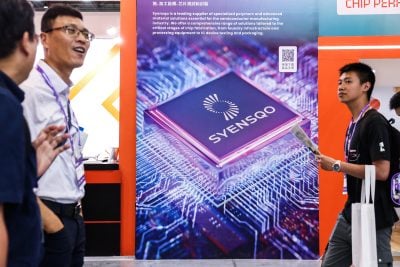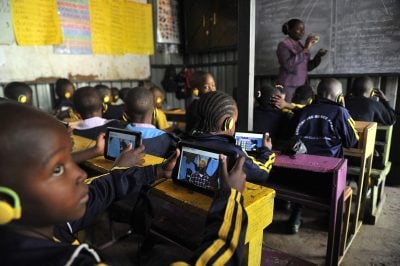Eight centuries ago, the fabled Emperor of the Mali Empire, Mansa Musa, built the sprawling Sankoré quarter. During his reign, the area, with its mosques, established itself throughout the known world as an important centre of learning in the merchant settlement of Timbuktu.
At its peak, it functioned as the largest university in the known world, with close to 25,000 students, a quarter of the city’s population. Although the Koran formed the bedrock of its learning tradition, scholarship was also offered in astronomy, law, maths, geography and the languages of the Sahel.
Sankoré offered four levels of education, similar to the hierarchy of degrees we have today. Scholars would progress from a BA-style degree to pass through two graduate levels, the MAs and PhDs of their time, to a final postdoctoral level known as the “circle of knowledge”.
The primary objective of the Sankoré education was scholarship and not vocation. Eventually students who completed the first three degree levels could become judges, professors, or priests and were highly valued as educated citizens. However, only those admitted into the circle of knowledge would have the opportunity to rise to prominence and become learned advisors to the kings of empire.
Teaching at Sankoré was ingeniously appropriate for the world it occupied. At the lower levels, lessons were conducted by a single professor, or sheikh, in the form of an oral recital. Students would take down the lesson, in text known as silsila, and read it back to the sheikh in order to commit it to memory.
At the graduate levels, students would return to their silsila and argue the concepts within, building vast research volumes as a result. These volumes formed part of a larger writing tradition that produced millions of manuscripts which eventually became a currency of their own. In fact, the Timbuktu manuscripts were some of the most prized commodities of their day – more dear than gold or livestock.
If this sounds familiar, it is because it is an earlier iteration of our contemporary higher education system. It was appropriate for Mali, and indeed the ancient world at large, because knowledge was scarce and the purpose of education was to arm its holders with as much of it as possible. This model was a precursor of universities founded later like the University of Bologna in Italy, which opened its doors in 1088, and this model has largely continued to drive scholarship over the years.
Given that a lot of these early institutions were founded as a means of religious education, methods of teaching were not very far from traditional liturgy. A learned member of the institution would pass on a culture of ideas, schools of thought and miscellaneous knowledge through speech.
Scholars who memorised, and sometimes wrote down, these teachings would aspire to be as learned as their tutors, to become individual catalogues of information, continuing the tradition by concentrating great knowledge within themselves.
This gave rise to pedagogy that centred teaching around concepts and ideas “just in case” scholars would require them for later use. There was a societal imperative for this because there was a relatively small pool able to join full-time education and the world at the time did not rely as much on literacy as it did on labour-intensive activity.
Knowledge on demand
After the development of the printing press in the 15th century, knowledge became more democratised, forming the basis for mass media and opening up more avenues to education.
Texts like the manuscripts of Timbuktu became more ubiquitous and literacy levels rose. Unfortunately, this innovation only reinforced the “just in case” model. While knowledge had become more accessible, it was still constrained by geography. One had to travel to a physical library at a physical university, or locate a bookseller to access specific volumes of information. Thus, accumulating information remained a tradition of our education systems and was never truly replaced with an alternative.
We are now living in a moment in history where information is ubiquitous. The advent of the internet age in the last three decades has given us access to entire libraries at the click of a button. There are several authorities we can borrow knowledge from and there are multiple sources we can use to confirm the legitimacy of information.
We can acquire, produce and disseminate information at an unprecedented scale and speed now. There is less reliance on an intermediary to study new or foreign concepts. Anyone willing to learn does not have to travel far or even travel at all. This is a time of “knowledge on demand”, where the prerogative to store catalogues of scholarship in our minds should be obsolete. This era opens up entirely new possibilities for education. This imperative for innovation is particularly acute in Africa, where we face massive resource constraints because our education systems exist in a paradigm that is no longer applicable.
Teaching at African universities has relied for too long on the scholarly professor orating to packed lecture halls. PhDs on the continent, a scarce resource in themselves, would be required in far larger numbers to enable these institutions to meet the demands of a rapidly growing youth population. In Africa, we cannot continue with the prevailing teaching model. There is a real opportunity to distribute the responsibilities of teaching to a variety of actors. Peer-to-peer learning has been proven to be particularly effective because if student A has to teach something to student B, it enables student A to understand the concept much better themselves.
Industry experts, retired professionals, research staff and learning facilitators (not necessarily with PhDs) can all contribute to learning. As can internship experiences with organisations. The idea is to remove learning from the domain of the lecture hall and to make it a far more interactive, social, holistic, and continuous experience that is applied to the real world as much as possible and is as relevant as possible to the student.
Learning how to learn
Our entire world evolves at the speed of technology. We have a unique opportunity to leverage it in rethinking our education models as well. With technology, students can interact with the subject matter in real time and through a variety of sources and media.
Technology also has tremendous potential for students to personalise their learning – choosing courses from various universities with the best content, and not being constrained to the limited (and often badly taught) content at their particular university. Technology enables students to take ownership of their own education. The idea is to build a culture of scholarly independence, to enable students to “learn how to learn” versus simply memorising facts and figures, as was the case in the past.
Want to continue reading? Subscribe today.
You've read all your free articles for this month! Subscribe now to enjoy full access to our content.
Digital Monthly
£8.00 / month
Receive full unlimited access to our articles, opinions, podcasts and more.
Digital Yearly
£70.00 / year
Our best value offer - save £26 and gain access to all of our digital content for an entire year!
 Sign in with Google
Sign in with Google 



